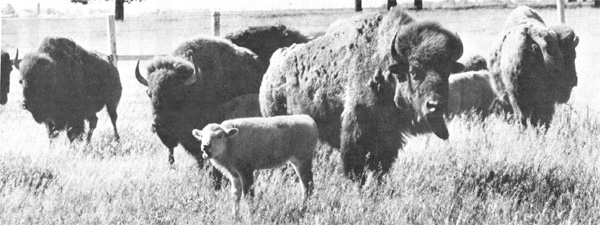Serious buffalo watcher here
Timothy K. George of Park Ridge, Illinois, spends six hours each day, six days a week, observing the Fermilab buffalo herd -the bison herd, to be correct. George is a graduate student at the University of Illinois and his observations are part of his studies in ethology (animal behavior).
Specifically, George is observing the mother-child relationship in the bison herd. With eleven new calves born in the herd since early May, George has plenty of subjects for study. His first observation days were spent establishing characteristics for identity -- color, size of horns, etc. Now he refers to them by numbers on ear tags and has named the calves by letters of the alphabet -- Alan, Betty Lou, Carl, Kim, Zeke, etc.
Tim is analyzing two hypotheses: That a calf leaves its mother's side, (1) because the mother rejects it during maturation; (2) because the calves find each other's company more enjoyable than the parent-child relationship. His preliminary observations indicate that the calves form their own youth group. They begin to nap and to play together like the neighborhood gang in just a few weeks.
Bison are known to be gregarious animals with definite social structure. Tim George notes, for example, that the bison introduced into the herd this spring (five were brought from South Dakota) frequently remain outside of the shelter while the "natives" barge inside. There is a dominant cow who reigns as herd matriarch. The male role is less dominant except in the rutting season when the two males vie for mates. But Tim notes that a nearly 50-50 male-female ratio in the Fermilab calves may indicate that in the original roaming herds, one male and one female may have been the mating pattern. The Fermilab herd now consists of 16 adults (14 female, 2 male) and 11 calves born in 1976.




